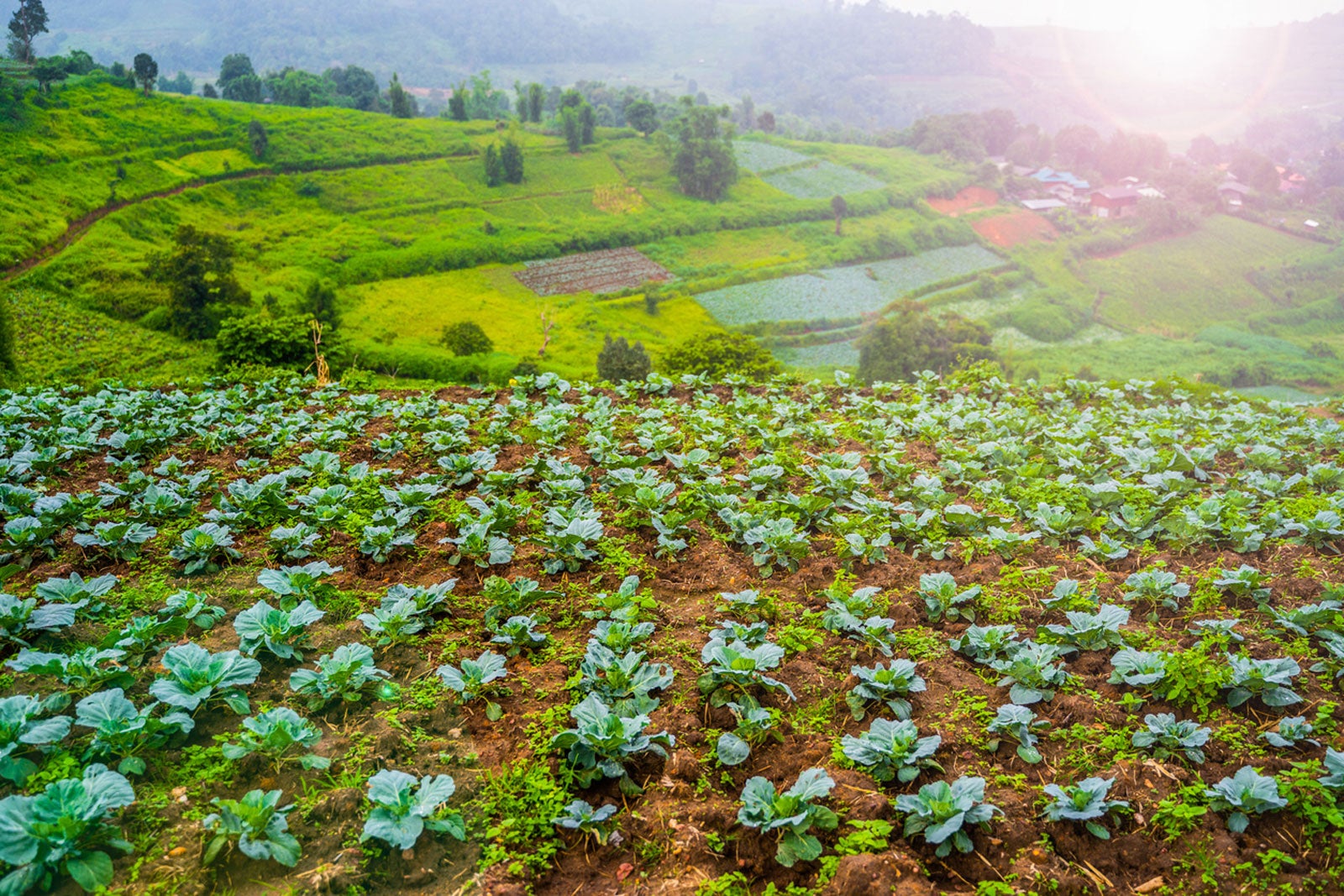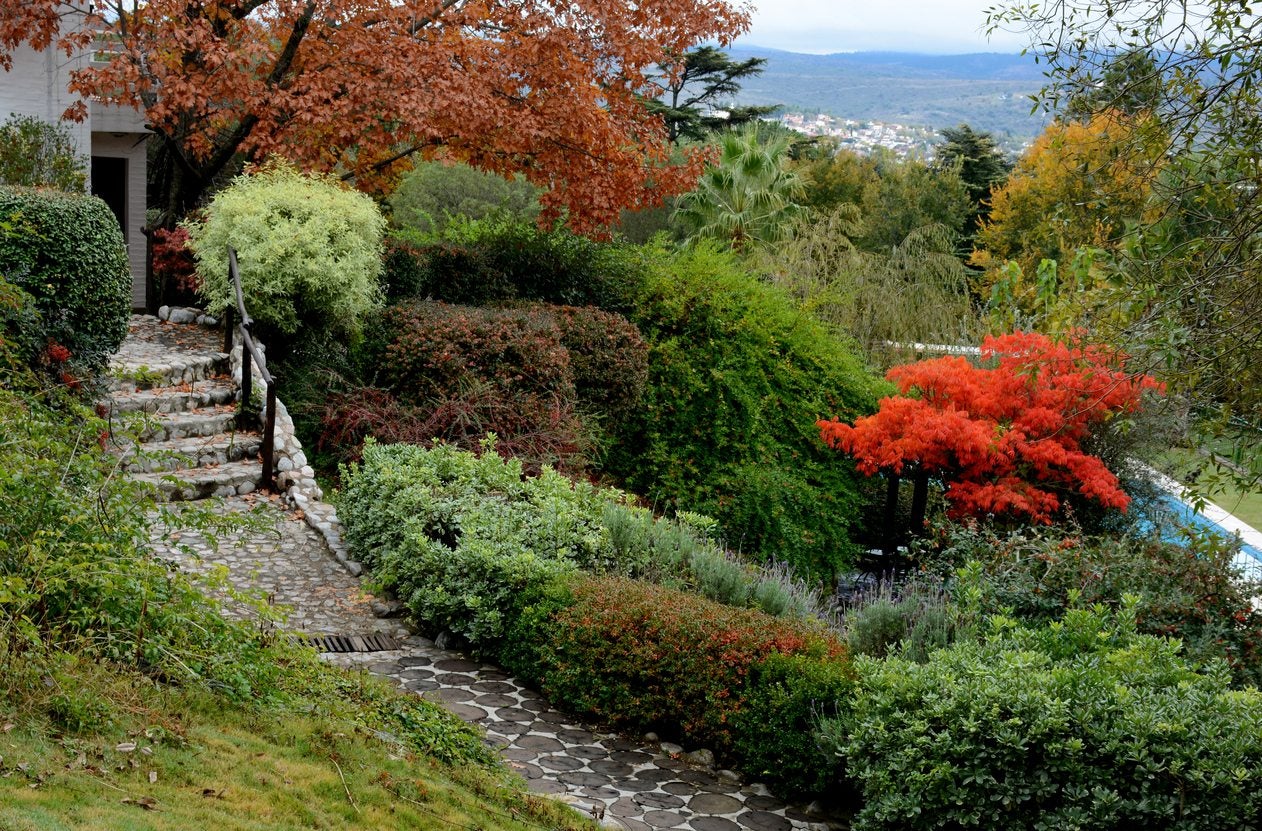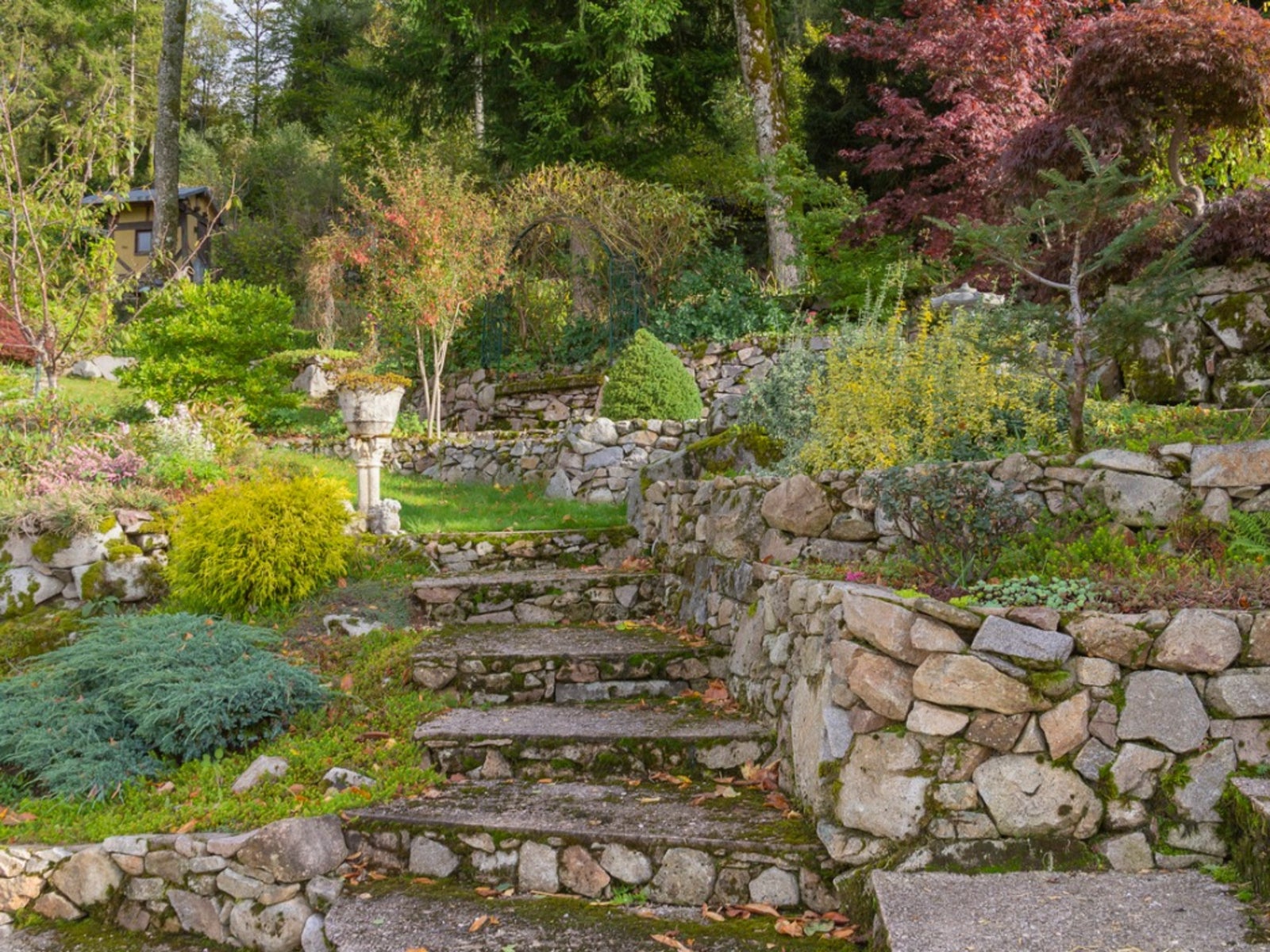Growing A Vegetable Garden On A Hillside


Vegetable gardens are tucked away in all kinds of places. Although most people would prefer a nice, level area for their vegetable garden, this is not always an option. For some of us, slopes and hillsides are a natural part of the landscape; in fact, it may be the only part of the landscape available for use as a vegetable garden. This, however, doesn't need to be a deterrent or cause for alarm, as growing a successful hillside vegetable garden is possible. I should know; I've done it.
How to Grow Vegetables on a Hillside
The degree of slope affects the type of irrigation you can use, and the slope of the land determines which way the rows run in your garden. The best solution for hillsides is to plant your vegetables across the slope using contour rows, terraces, or raised beds. This not only makes it easier for you but also prevents problems with erosion. Also, take advantage of microclimates when placing crops. The top of a hillside will not only be warmer but drier than the bottom, so keep this in mind when selecting the placement of vegetables in the hillside garden. For instance, moisture-loving plants thrive best near the bottom of the slope. For best success, the vegetable garden should be located on a south or southeastern slope. South-facing slopes are warmer and less subject to damaging frosts. For my hillside vegetable garden, I chose to create 4 x 6 (1.2 x 1.8 m.) beds. Depending on your available space and number of family members, the amount of beds will vary. I created six of them, along with another separate herb garden. For each bed, I used heavy logs, split lengthwise. Of course, you can use whatever suits your needs. I chose this only because it was sturdy and readily available free of charge, as we had been clearing trees off the landscape. Each bed was leveled out and filled with layers of wet newspaper, soil, and manure. To save on maintenance, I established paths between each bed and around the entire vegetable garden. Although not required, I applied a layer of landscaping fabric along the pathways and added shredded mulch on top to keep weeds out. The mulch also helped with runoff. Within the beds, I used straw mulch to help retain moisture and keep plants cool, as I live in the South where it tends to get very hot in summer. Another method I used for growing my hillside vegetable garden was growing certain crops together in groups. For instance, I planted corn and beans together to allow the beans to climb up the corn stalks, reducing the need for staking. I also incorporated vine crops, such as potatoes, to keep weeds to a minimum and cool the soil. And since these vegetables do not ripen at the same time, it enabled me to have a longer harvest. Small stepladders are also good for vine crops, especially pumpkins. Alternatively, you can choose compact varieties. In my hillside vegetable garden, I also implemented companion flowers and herbs to help eliminate problems with insects without resorting to the use of chemicals. The area around the hillside vegetable garden was filled with flowers, enticing beneficial insects into the garden. Although the beds were a lot of work in the making, in the end it was well worth it. The hillside garden even survived the harsh winds and rain as the result of a nearby tornado. Nothing washed down the hill, although some of the plants did take a licking in all the wind, bending them over. Nonetheless, I found success with my hillside vegetable garden. I had more produce than I knew what to do with. So, if you find yourself without a level area for a vegetable garden, do not despair. With careful planning and the use of contour rows, terraces, or raised beds, you can still have the greatest hillside vegetable garden in the neighborhood.
Gardening tips, videos, info and more delivered right to your inbox!
Sign up for the Gardening Know How newsletter today and receive a free copy of our e-book "How to Grow Delicious Tomatoes".

Nikki Tilley has been gardening for nearly three decades. The former Senior Editor and Archivist of Gardening Know How, Nikki has also authored six gardening books.
-
 Looking For Plants To Give You The Soft And Fuzzies? Try These 5 Fuzzy Leaf Plant Options
Looking For Plants To Give You The Soft And Fuzzies? Try These 5 Fuzzy Leaf Plant OptionsLovers of texture, drama, silver foliage and tactile plants will adore these special sensory garden additions. These fuzzy leaf plant options will leave you all aglow
By Susan Albert
-
 Get Ready For A Summer Of Hummers! Grow These Full Sun Hummingbird Plants and Flowers
Get Ready For A Summer Of Hummers! Grow These Full Sun Hummingbird Plants and FlowersIf you’re lucky enough to enjoy a sunny backyard, make sure you are maxing out on your pollinator opportunities and grow these full sun hummingbird plants and flowers
By Tonya Barnett
-
 Sloped Rain Garden Alternatives: Planting A Rain Garden On A Hill
Sloped Rain Garden Alternatives: Planting A Rain Garden On A HillWhen planning a rain garden, it’s important to determine whether or not it is a good fit for your landscape. In the case of a hill or steep slope, a rain garden may not be the ideal solution. Click here to learn more.
By Susan Albert
-
 Choosing Plants For Sloping Areas – What Plants Grow On Slopes
Choosing Plants For Sloping Areas – What Plants Grow On SlopesOnce you know what plants grow on slopes, you can use this knowledge to your benefit and plan a garden that both thrives and helps stabilize the hillside. Click here for ideas on choosing plants for sloping areas and how to maximize this difficult planting terrain.
By Bonnie L. Grant
-
 Ground Cover Plants For Hillside Gardens
Ground Cover Plants For Hillside GardensSteep hills in the landscape have always been a problem. Anyone who has mowed lawn on a hillside knows it?s no picnic. So what's a gardener to do? Read this article and opt for hill ground cover instead.
By Jackie Rhoades
-
 Tips For Watering On A Hillside Garden
Tips For Watering On A Hillside GardenThe biggest problem with irrigating a hill is having all the water run off before it has a chance to soak into the ground. Controlling this runoff is important. Read here to learn more.
By Nikki Tilley